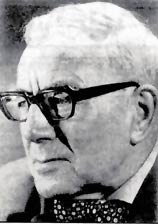Terrorism is notoriously hard to define because of the many forms that it has taken over space and time. Terrorism shares many aspects with such concepts as anti-colonial revolution, nationalism, class struggle and organized crime. A terrorism may be all or none of these things, or any combination of these. Also, terrorists may have connections with these more definiable groups, benefitting from their structures but also standing apart from them.
Terrorism has also changed over time, as have the definitions of the phenomenon. The first instance of the use of "terrorism" was applied to the bloodiest period of the French Revolution in late 1793 into early 1794. Terror, as defined by Robespierre and the Committee of Public Safety, was the use of violence to insure political confomity with the goals and plans of the Revolution (1). There were, as we all know, a severe reaction (Thermidor) and further on in the Directory and the Consulate, culminating in the coronation of Napoleon Bonaparte as Emperor in 1804 (2). These are not really the roots of the terrorists of today. As we shall see tomorrow, today's terrorists have their roots in Eastern European (and particularly Russian) anarchist movements of the 1870's through the early part of the twentieth century.
So, how to define terrorism? A fascinating study, done in 1988, looked at the recurrence of terms in 109 different definitions of terrorism and came to some interesting conclusions. From their study, Alex P. Schmid, Albert Jongman and colleagues discovered that the following terms were the "top five" in percentage of recurrence in definitions of terror:
- Violence, force (83.5%)
- Political (65%)
- Fear (51%)
- Threat (47%)
- Psychological effects and anticipated reactions (41.5%)
From these terms and their logical extensions (which form the rest of the list), the elements of a definition begin to emerge (3). The terrorist becomes more differentiated from the lunatic assassin, the criminal or the lone actor with personal motivation.
Bruce Hoffman, in Inside Terrorism, provides more defnintion and nuance to these terms in the task of defining terrorism. He, in differentiating terrorists from other criminals, posits that terrorism is
- ineluctably political in aims and motives
- violent - or, equally important, threatens violence
- designed to have far-reaching psychological reprecussions beyond the immediate victim or target
- conducted by an organization with an identifiable chain of command or conspiriatorial cell structure (whose members wear no uniform or identifying insignia)
- perpetrated by a subnational group or non-state entity (4).
At the risk of being reductionist, can this be boiled down into a short and accurate defnition of terrorism? The easy answer is "sort of" and the more accurate answer is "not really." Audrey Kurth Cronin attempts such an exercise in her introduction to Attacking Terrorism: Elements of a Grand Strategy. She posits that the working definition of terrorism be "the surprise threat or use of seemingly random violence against innocents for political ends by a non-state actor (5)." This raises as many questions as it answers, but it at least provides a starting point for the discussion of the history and present of terrorism and its implications for the past as well as our own time and the future.
Next, we shall erect a framework within which to consider the history and development of terrorism from the late nineteenth century to our own time.
Notes
- R.R. Palmer, Twelve Who Ruled: The Year of the Terror in the French Revolution (Princeton, NJ: Princeton University Press, 1941), 305.
- Francois Furet, "Napoleon Bonaparte," in The French Revolution: Recent Debates and New Controversies, ed. Gary Kates (London: Routledge, 1998), 337.
- Alex P. Schmid, Albert J. Jongman et al., Political Terrorism: A New Guide to Actors, Authors, Concepts, Data Bases, Theories, and Literature (New Brunswick, NJ: Transaction Books, 1988), 5-6.
- Bruce Hoffman, Inside Terrorism (New York: Columbia University Press, 1998), 43.
- Audrey Kurth Cronin, "Introduction," in Attacking Terrorism: Elements of a Grand Strategy, eds. Audrey Kurth Cronin and James M. Ludes (Washington, D.C.: Georgetown University Press, 2004), 4.

No comments:
Post a Comment